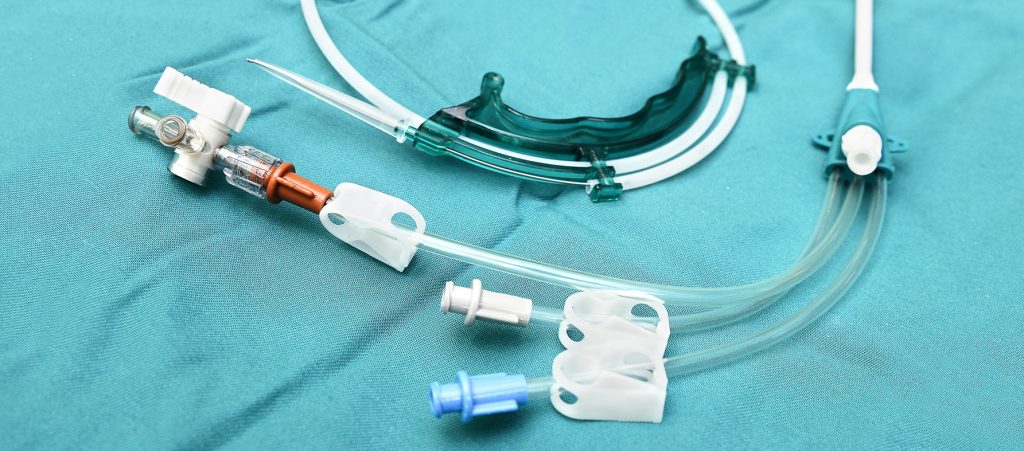Pathogen-specific strategies may improve prevention efforts of CLABSIs

Scientists from the National Center for Emerging and Zoonotic Infectious Diseases, Centers for Disease Control and Prevention analysed central-line–associated bloodstream infection (CLABSI) data from the CDC National Healthcare Safety Network (NHSN) to better understand the distribution of CLABSI pathogens in acute-care hospitals.1 The study aimed to inform infection prevention and control specialists in improving CLABSIs prevention efforts.
Adult intensive care units (ICUs) and wards reported the highest number of CLABSIs of 44% and 30%, respectively; the most common pathogens were Candida spp/yeast in adult ICUs and Enterobacteriaceae in adult wards, paediatric wards, oncology wards, and paediatric ICUs (PICUs).1 The rate ratio of pathogen-specific CLABSIs decreased during the surveillance period (i.e., 2011 to 2017) with the exception of Candida spp/yeast CLABSIs in adult ICUs and Enterobacteriaceae CLABSIs in oncology wards.
CLABSIs are the leading cause of healthcare-associated infections (HAIs) and are associated with prolonged hospitalisation, increased mortality, and increased healthcare costs.1 The implementation of evidence-based prevention measures and guidelines has resulted in a 50% reduction in the incidence rate of CLABSIs in the United States from 2008 to 2014 and a further 9% decrease from 2016 to 2017.2-5
Considering the emergence of antimicrobial resistant Enterobacteriaceae including the extended-spectrum β-lactamases (ESBL)-producing and carbapenemase-producing strains, the observation of a 50% increase in Enterobacteriaceae CLABSIs in oncology wards has been alarming.1 Colonisation of Gram-negative bacteria in the gastrointestinal tract has been shown to increase the risk of subsequent HAIs, including Gram negative bacteraemia.6 Novel prevention strategies such as selective decontamination of the digestive tract,7 manipulation of patient’s microbiome,6 and chlorhexidine gluconate bathing8,9 can be effective in reducing Gram negative HAIs to a certain extent. However, better interventions targeted at Enterobacteriaceae are needed.
The authors of this study have also noted the increase in Candida spp/yeast CLABSIs in adult ICUs since 2011.1 The increase is partly attributed to the change in the NHSN urinary tract infection (UTI) definition in 2015 by reclassifying secondary BSIs as primary BSIs and excluding yeast as a cause for UTIs.1 The emergence of Candida auris, which persists in the healthcare environment has prompted efforts in improving healthcare environmental cleaning to address the role of non-albicans Candida spp in HAIs.10,11 In addition, interventions aimed at improving water quality in healthcare institutions – as well as cleaning and disinfection of surfaces around sinks – have been implemented to minimise exposure to Staphylococcus aureus, another pathogen responsible for a sizable proportion of CLABSIs.12,13
The authors concluded that while great progress has been made in reducing CLABSIs over the last decade, better understanding of pathogen distribution can help improve pathogen-specific prevention strategies for further reductions of serious infections.
References
- Novosad SA, et al. Infect Control Hosp Epidemiol 2020;41:313-319.
- Marschall J, et al. Infect Control Hosp Epidemiol 2014;35:753-771.
- O’Grady NP, et al. Clin Infect Dis 2011;52:e162-e193.
- Centers for Disease Control and Prevention. National and state healthcare-associated infections progress report. Available at: https://www.cdc.gov/HAI/pdfs/progress-report/hai-progress-report.pdf. Accessed 28 April 2020.
- Centers for Disease Control and Prevention. Current HAI progress report. Available at: https://www.cdc.gov/hai/data/portal/progress-report.html. Accessed 28 April 2020.
- Frencken JF, et al. Clin Infect Dis 2018;66:497-503.
- Wittekamp BH, et al. JAMA 2018;320:2087-2098.
- Cassir N, et al. Am J Infect Control 2015;43:640-643.
- Lin MY, et al. Infect Control Hosp Epidemiol 2014;35:440-442.
- Piedrahita CT, et al. Infect Control Hosp Epidemiol 2017;38:1107-1109.
- Centers for Disease Control and Prevention. Infection prevention and control for Candida auris. Available at: https://www.cdc.gov/fungal/candida-auris/c-auris-infection-control.html. Accessed 28 April 2020.
- Kanamori H, et al. Clin Infect Dis 2016;62:1423-1435.
- Centers for Disease Control and Prevention. Reduce risk from water: From plumbing to patients. Available at: https://www.cdc.gov/hai/prevent/water-management.html. Accessed 28 April 2020.










